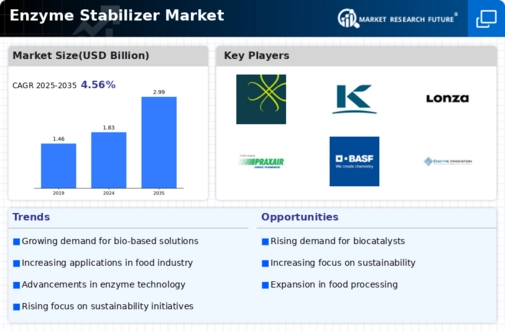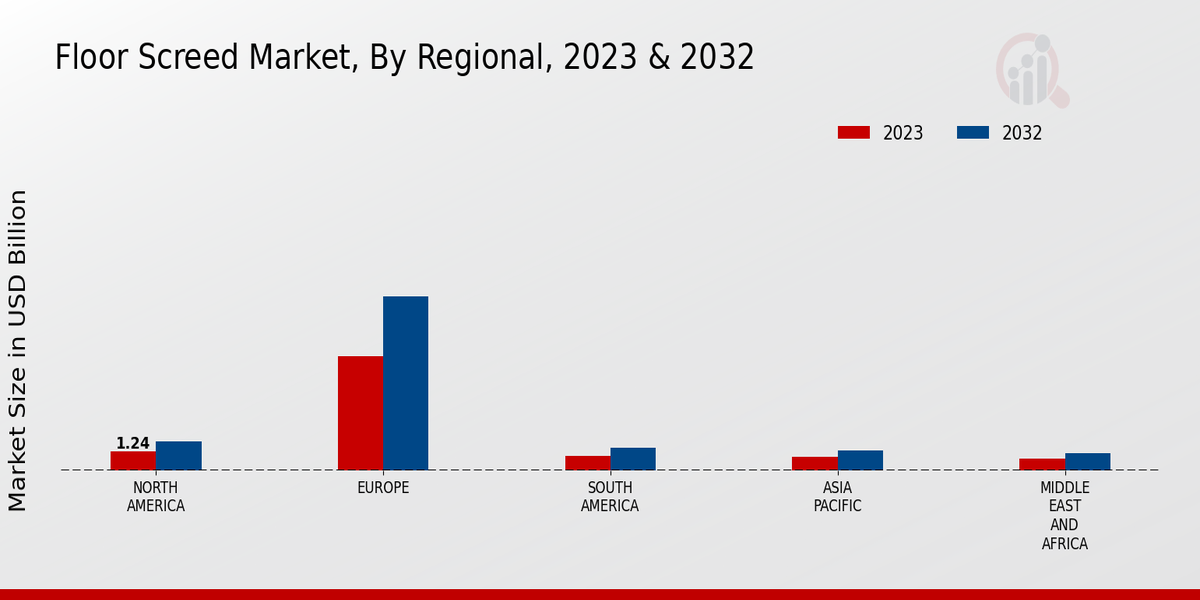Growth in Biofuel Production
The Global Enzyme Stabilizer Market Industry is significantly influenced by the expansion of biofuel production. Enzymes are essential in converting biomass into biofuels, and stabilizers enhance their efficacy and longevity. As countries strive to meet renewable energy targets, the demand for biofuels is expected to rise, consequently increasing the need for enzyme stabilizers. This sector's growth is indicative of a broader shift towards sustainable energy solutions. The market is projected to reach 2.99 USD Billion by 2035, underscoring the potential for enzyme stabilizers to play a pivotal role in the biofuel industry.
Expanding Applications in Pharmaceuticals
The Global Enzyme Stabilizer Market Industry is increasingly benefiting from expanding applications in the pharmaceutical sector. Enzyme stabilizers are utilized in drug formulation and production processes, enhancing the stability and efficacy of active ingredients. As the pharmaceutical industry continues to evolve, the demand for enzyme stabilizers is expected to grow, driven by the need for more effective and stable formulations. This trend is indicative of a broader recognition of the importance of enzyme stabilizers in ensuring product quality and safety. The integration of these stabilizers into pharmaceutical applications is likely to contribute to the overall growth of the market.
Rising Demand in Food and Beverage Sector
The Global Enzyme Stabilizer Market Industry experiences a notable surge in demand driven by the food and beverage sector. Enzyme stabilizers play a crucial role in enhancing the shelf life and quality of products, particularly in baked goods and dairy. As consumers increasingly seek products with natural ingredients, manufacturers are incorporating enzyme stabilizers to meet these preferences. This trend is reflected in the projected market value of 1.83 USD Billion in 2024, indicating a robust growth trajectory. The food industry, accounting for a significant share of the market, is likely to continue driving innovation and adoption of enzyme stabilizers.
Technological Advancements in Enzyme Production
Technological advancements in enzyme production are propelling the Global Enzyme Stabilizer Market Industry forward. Innovations in biotechnology and genetic engineering have led to the development of more efficient and stable enzymes. These advancements not only improve the performance of enzyme stabilizers but also reduce production costs. As a result, manufacturers are increasingly adopting these technologies to enhance product offerings. The integration of advanced production techniques is likely to contribute to a compound annual growth rate of 4.57% from 2025 to 2035, reflecting the industry's commitment to continuous improvement and sustainability.
Increasing Awareness of Environmental Sustainability
The Global Enzyme Stabilizer Market Industry is witnessing a shift towards environmentally sustainable practices. As industries become more aware of their environmental impact, there is a growing preference for natural and biodegradable enzyme stabilizers. This trend is particularly evident in sectors such as detergents and personal care, where consumers demand eco-friendly products. The emphasis on sustainability is likely to drive innovation and investment in enzyme stabilizers that align with these values. As a result, the market is expected to expand, with manufacturers focusing on developing products that meet both performance and environmental standards.


















Leave a Comment